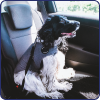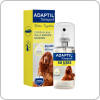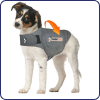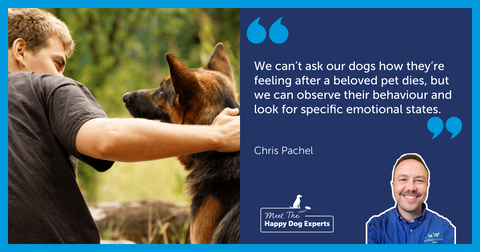Want to subscribe to our blog?

20 Amazing Facts about Different Dog Breeds
Written by Adaptil, published on April 18, 2023
We're sure you will agree that all dogs are special, but do you know how special they really are?
While pooches around the world share a common genetic ancestry, over the centuries different breeds have evolved to give us dogs that can yodel, dogs that have become famous film stars, and dogs that survived the Titanic!
And, of course, different breeds have developed different skills and unique features over the centuries that sets them as 'a breed apart'! Do you know which dog breeds are the most friendly?
Every pooch is special - but here are 20 amazing facts about different dog breeds that might surprise you!
And don't forget that ADAPTILcan help your doggo feel relaxed and constantly supported in new situations such as travel to the vet or spending time alone, whatever their breed!
20 Amazing Facts about Different Dog Breeds
- When theBasenjibarks it sounds like a yodel! It's also known as the 'African barkless' dog, and you can probably guess why! It's believed that these dogs, over time, lost the ability to bark as their quietness proved to be an advantage over predators, keeping their presence hidden. They are an ancient breed that we often see being depicted in ancient Egyptian art, linking all the way back to the Pharaohs.
- Dalmatiansare born without any spots! Their spots begin to develop when they are about three months old and they can get more as they grow older.
- TheSaluki is known as the "Royal Dog of Egypt" and one of the most elegant looking dogs on the planet. Nevertheless, these Sighthoundslove to hunt and can chase their prey over very rough terrain, and at impressive speed!
- All dogs smell a little to human noses! But if you are looking for a dog that is more pleasing to the nose, the Siberian Husky or the Basenji are keen on keeping their coats pristinely clean, and are renowned for their general lack of odour compared to other breeds.
- The shape of their head along with fringed ears has given the Papillonits name - as it looks like a butterfly (Papillon in French). They descend from the toy spaniel that is frequently portrayed in paintings by the Old Masters, from as far back as the 16th century.
- If your adult dog looks like a Chow Chow but has a pink tongue, it's almost certainly not a purebred Chow Chow! A purebred Chow Chowwill have a purple tongue.Whilst these pups are generally born with pink tongues, their tongues will darken over time, turning purple-black by the time they are around 6 months old.
- Rin Tin Tin, the famous German Shepherd, was nominated for an Academy Award but, unfortunately, was unsuccessful! Although primarily a star of silent films, Rin Tin Tin did also appear in four sound movies.
- The Beaglewas in the top five most popular breeds in 1934, and still remains in the top five today! This popularity is likely due to their chilled out, friendly personalities as well as charming looks.

- The Norwegien Lundehundis the only dog breed created for the job of puffin hunting. Unlike other dog breeds, they have 6 toes on each foot to help them navigate the rocks and avoid slipping!
- ThePoodle's haircut helps their swimming abilities and the pom-poms help to keep their joints warm.Poodles also have a soft curly coat which doesn't shed much and is a popular breed for allergy sufferers.
- Although cheetahs can run faster, Greyhounds can win the race. Cheetahs can run twice as fast as greyhounds, but they can only maintain their 70 mph speed for short distances. The slower Greyhound running at a 35 mph speed can run for about seven miles, so will overtake the cheetah! Go Greyhound!
- The Bloodhound's sense of smell is so accurate that the results of its tracking can be used as evidence in a court of law. A Bloodhound is often called 'a nose with a dog attached'!
- Milly, the Chihuahuamade it into the Guinness World Records as the smallest recorded dog, weighing in at just 1lb and standing tall at 3.8 inches.
- In contrast, Zorba the Mastiff was named as the world's overall largest dog ever. Zorba weighed in at 343 lbs and measured over eight feet from his nose to his tail.
- Great Danes originated in Germany not Denmark. They are also known as Apollo of dogs, Apollo being the Greek god of the sun, the brightest fixture in the sky.
- The Bullmastiff was developed to catch and hold poachers without hurting them. The Bullmastiff's nickname is The Gamekeeper's Night Dog.
- Two Pomeraniansand a Pekinese were small enough to be smuggled onto the lifeboats of the Titanic and survived! Lady: a Pomeranian was wrapped in a blanket, aboard Lifeboat 7; nobody objected to Sun Yat Sen: a Pekingese boarding Lifeboat 3; Another Pomeranian was found on board Lifeboat 6 and was rescued by the RMS Carpathia.
- The Jindo is a national treasure in South Korea and was included in the opening ceremonies of the Seoul Olympic games. Due to its protected status within South Korea, only dogs born on Jindo Island can be officially registered as a Jindo.
- Dachshundshave webbed feet but these are used for digging and not swimming! The Dachshund was bred for hunting small animals like badgers and their webbed feet act like a shovel to move dirt out of the way efficiently.
- The Saint Bernard breedwasdeveloped by monks in the 17th century in Switzerland and contains a mixture combining the Great Pyrenees, Great Danes, Bulldogs, Newfoundlands and others. They've had previous names: Barryhunds (in tribute to Barry, a dog that saved 40 lives), Sacred Dogs, Alpine Mastiffs, Alpendogs, and Hospice Dogs. They were officially designated the 'St. Bernard' in 1880, after the Great St. Bernard's Pass between Switzerland and Italy.

The doghas been bred through the centuries for a number of reasons; their sense of smell, their physical attributes, their ability to perform many roles and help humans, such as herding sheep, assisting the police, aiding people with impairments or just to be affectionate companions, so it's no wonder that their influence has given them the title of "man's best friend."
Following our expert tips will help to ensure your bond with your dog goes from strength to strength.
Make sure to join our community for weekly advice from our dog behaviour experts as well as product offers and competitions.
 Related Posts
Related Posts
Legal notice The information collected is intended for Ceva Santé Animale and the group in order to manage your requests. This information can be shared with service providers in order to organize their management. In accordance with the General Data Protection Regulations, you have the right to access, rectify and limit the processing of your data. You can also, in certain cases, object to the processing, withdraw your consent and request the deletion and portability of your data. For any request in relation to your personal data, please visit this page.



































